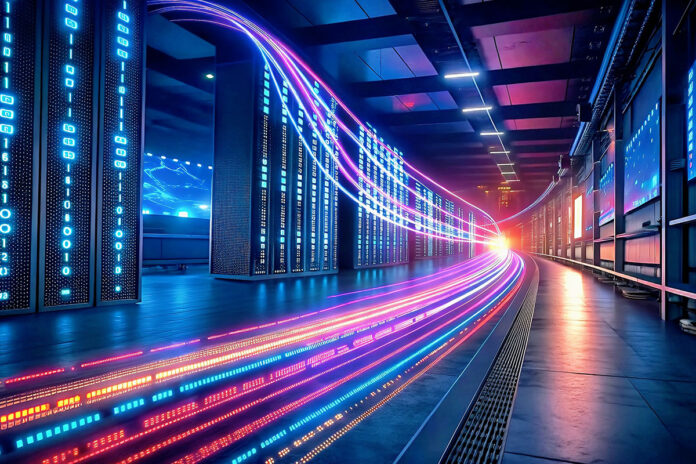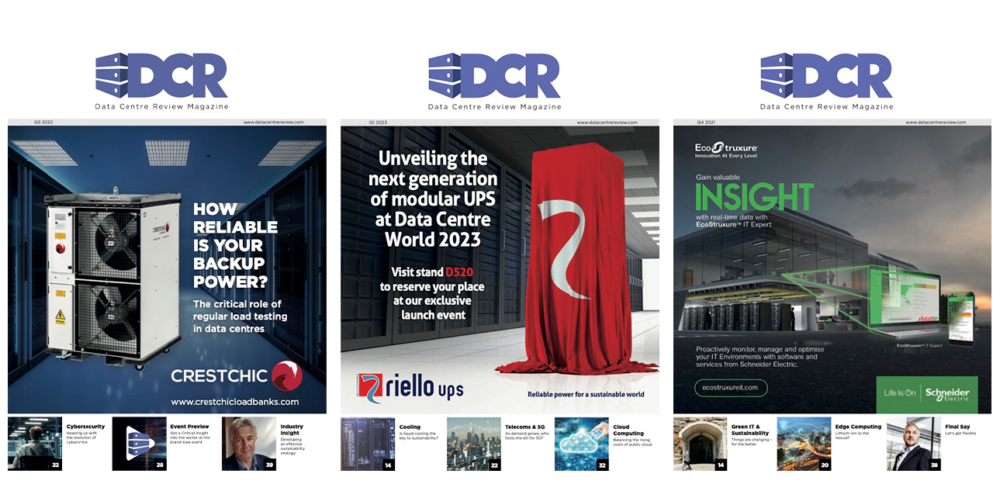The data centre industry is facing seismic change, as increased focus on AI puts huge pressure on the sector. With the UK Government setting lofty ambitions for AI growth in the UK, demand is only going to grow.
Whilst the Government has announced plans to establish ‘AI Growth Zones’ to facilitate this, concerns remain around the sustainability implications of these zones, as well as the potential infrastructure overhaul needed to support them.
So how will the demand from AI impact the UK’s data centre industry? We spoke to three experts to get their insights.
The demand challenge
Terry Storrar, Managing Director at Leaseweb UK, explains how the rapid growth of AI technologies is “driving more focus on GPUs, meaning data centres must now deliver high volumes of controlled power in a denser environment to fulfil customer compute demand. In fact, around 70% of overall demand for data centre capacity is predicted to be for sites set up to host advanced AI workloads by 2030.”
Geoff Barlow, Product and Strategy Director at Node4 agrees, noting “as AI adoption accelerates, so does the sheer volume of data created and stored. IDC forecasts global data generation will reach 221 zettabytes by 2026, equating to over 400 million terabytes every day. This exponential growth is driving huge demand for scalable, efficient storage and compute capacity.”
However, Storrar points out that AI technologies can also be used to help manage this demand. “Aside from supplying the power for AI technologies, these are becoming more widely used in data centre operations, most notably for reporting tools and systems that help identify and improve efficiencies to drive down energy usage,” he outlines.
“The world’s data centres are ably employing AI for reporting processes to capture data and analyse how things can be done better. And data centre operators will continue to focus on improvements through 2025.”
Bruce Kornfeld, Chief Product Officer at StorMagic also emphasises the importance of innovative solutions to help alleviate this growing pressure on data centres. “Hyperconverged infrastructure (HCI) at the edge as part of a wider cloud strategy is one such alternative,” he explains.
“HCI combines computing, networking, and storage resources into a single, streamlined data centre architecture using virtualisation to reduce server requirements. Designed specifically for smaller sites, modern HCI solutions run applications and store data securely at the edge yet can connect to the cloud and data centre as often as needed. Implementing solutions like this both eases the load on the data centres and improves the performance of local devices that, thanks to advances in AI, are now delivering more valuable insights than we ever imagined.”
Looking toward sustainability in data centres
Aside from capacity, another challenge of the ever-increasing levels of energy consumption is sustainability. Leaseweb’s Storrar explains that “the world’s data centre industry faces a very significant challenge in balancing sustainability with how to provide for the ever-increasing demand for power. It is important to acknowledge that data centres are now looking at density spaces that far exceed the kilowattage offered in the past – and alongside this there is the need to avoid power deficits and stay planet conscious at the same time.
“It goes without saying that demonstrating investment into sustainability is an absolute priority for the data centre industry. Achieving and keeping compliance with international industry regulations, including ISO standards, is a solid way of showing accountability for environmental targets. And the industry must plan for long term investment as sustainability measures will only become more stringent in future years.”
Node4’s Barlow agrees, outlining how “training large models and serving real-time AI applications is accelerating investment in hyperscale and edge infrastructure. Analysts predict that cloud hyperscaler capital expenditure will rise sharply – up 17% in 2024 – as providers race to support AI workloads. This rapid expansion must be balanced with sustainable design, renewable energy adoption, and efficient cooling technologies. One critical strategy is intelligent data tiering – using AI – driven tools to automatically move infrequently accessed (“cold”) data to low-energy storage, such as tape. With up to 80% of enterprise data rarely accessed, smart tiering can significantly reduce costs and energy consumption. Analysts estimate such approaches could cut storage costs by up to 40% while improving environmental performance.”
Barlow concludes, “The future of data centres isn’t just about capacity but about meeting growing demand responsibly, with AI helping organisations manage data more intelligently while supporting their sustainability goals.”



